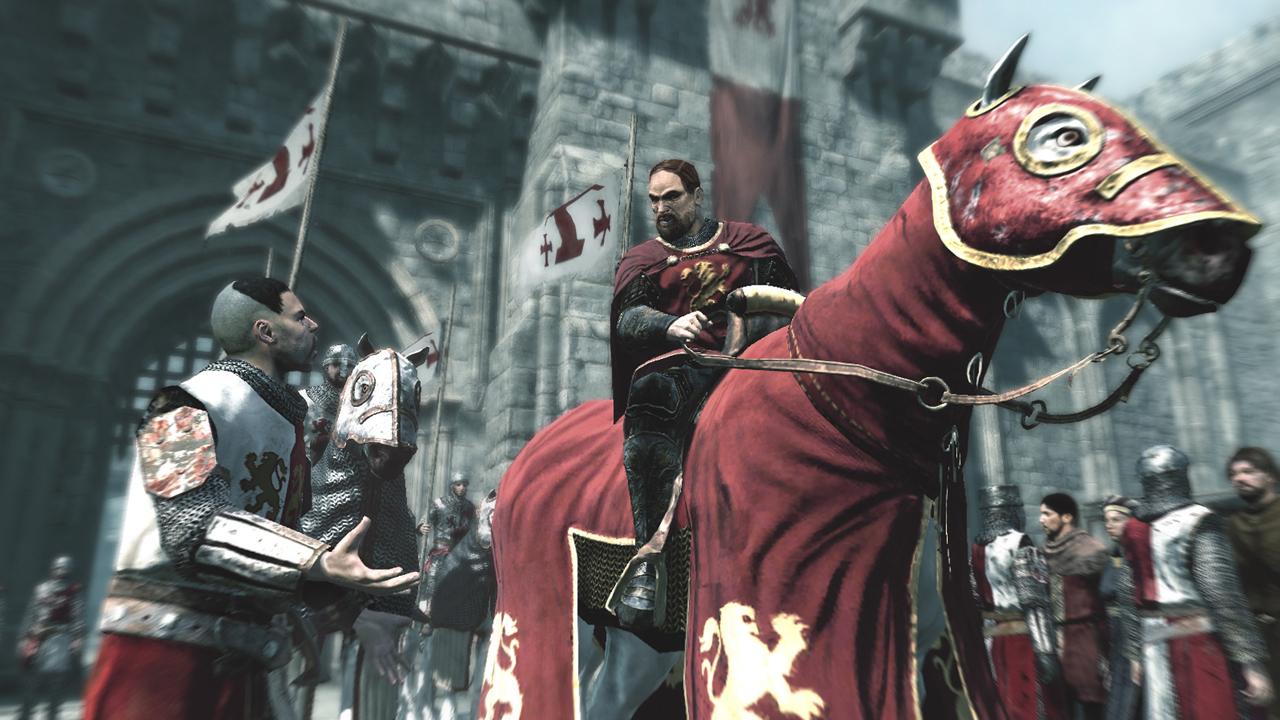Why you can trust 12DOVE
The real thrill of Assassin’s Creed is in its many chases. There are predictable chases, such as after having killed the Lord of the Manor, and unpredictable chases where knocking over a jar-carrier alerts an already suspicious guard. There are rooftop chases, where you’ll finally escape by diving into a secluded garden, or street-level chases, where you can dive through stalls, bash through the crowds, and lose the pursuit by making sharp turns and then sitting quietly on a park bench, or blending into crowds of chanting monks. There are even reverse chases - where your target escapes, and flees, you on his tail, guards on your tail. This is Benny Hill style madness, and glorious for it. Seriously. Grab the mp3 of the Benny Hill theme and play it while on the run. It’s funny. All that’s missing are the buxom wenches. Expansion pack, please.
You’re aided by a smart control system that automates some of the finer details of movement. Rather than spotting a route up a wall - as in most platform games - you can usually point Altair at the problem and he’ll find his own hand-holds. Instead of blindly trying to judge when to press the jump button as you leave a ledge, you don’t. Altair has two modes of movement: high and low-profile. In low profile, you can blend, languidly surfing the crowds. In high-profile, you’ll start running and sprinting. In low profile, you’ll have to get close to assassinate - driving a hidden blade into an exposed back and walking away from the still vertical corpse. In high profile, swords are drawn, and violence is committed without worry. Choosing between the two is a matter of pressing Space.
There is another way of ending a chase: to Errol Flynn your way out. Sword fighting in Assassin’s Creed is as nuanced as free-running. Once trained, you can block, counter, dodge, grab and swing freely. Timing your moves is the real challenge - particularly against the highly trained Templar Knights you face. Arrogantly swinging your sword will see your swipes repelled. Instead, if outnumbered, it’s better to wait for the opponents to swing - you’ll counter with brutal efficiency. It encourages subtle tactics: better to place your back to a wall and then lunge at a target. If he dodges, he’ll swing back - opening himself up to an instant counter.
Assassin’s Creed is at its best when you’re flipping between all the options within a minute, from fleeing to combat, from stealth to violence. It fails when it defines your approach. The final hours of the game prove our point. The targets taken down, the inevitable plot twist having occurred, the game abandons the freedom of the cities and turns into a two-hour combat gauntlet. Stealth and free-running are jettisoned: all that is left is a constant barrage of swordfights. It’s a disaster, a betrayal of everything the player has learnt so far. It abandons even the slim veneer of choice that the very best games offer us, turning into Double Dragon in a monk’s robe.
It’s a failure of confidence and of art; a damning end to what could have been the game of the year. We said that Assassin’s Creed deserves to be played, and we believe it. Somewhere within this idea is an extraordinary game waiting to happen. A sequel is all but inevitable. That sequel can avoid the pratfalls of the first by trusting players with the full scope of its cities from minute one, by offering a wider choice of who to kill and how to investigate. And by thinking of a good ending. Until then, do play it.
Apr 8, 2008
More info
| Genre | Action |
| Description | Ubisoft Montreal's formerly secret project seems to mix elements of Splinter Cell and Prince of Persia. |
| Franchise name | Assassin's Creed |
| Platform | "PC","PS3","Xbox 360" |
| US censor rating | "Mature","Mature","Mature" |
| UK censor rating | "","","" |
| Release date | 1 January 1970 (US), 1 January 1970 (UK) |
Most Popular

